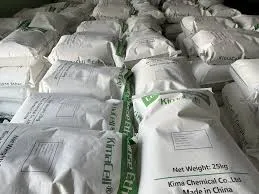
Шіл . 28, 2024 14:02 Back to list
Understanding the Viscosity Properties of Hydroxyethyl Cellulose in Various Applications and Conditions
Understanding Hydroxyethyl Cellulose Viscosity Properties and Applications
Hydroxyethyl cellulose (HEC) is a derivative of cellulose and widely used in various industries, including pharmaceuticals, cosmetics, food, and construction. Its unique properties, particularly its viscosity, play a crucial role in determining its effectiveness in different applications. This article explores the viscosity characteristics of hydroxyethyl cellulose, the factors influencing it, and its practical applications.
What is Hydroxyethyl Cellulose?
Hydroxyethyl cellulose is a non-ionic, water-soluble polymer derived from cellulose through the etherification process with ethylene oxide. Its structure allows it to interact with water and other compounds, providing a gel-like consistency when dissolved. This property makes it a valuable additive in numerous formulations.
Viscosity Characteristics
The viscosity of hydroxyethyl cellulose solutions is one of its defining properties. Viscosity refers to a fluid's resistance to flow; higher viscosity indicates a thicker fluid. HEC exhibits a non-Newtonian shear-thinning behavior, meaning its viscosity decreases under shear stress, making it easier to handle during processing and application.
Several factors influence the viscosity of hydroxyethyl cellulose, including
1. Molecular Weight HEC is available in various molecular weights, ranging from low to high. Higher molecular weight polymers tend to show increased viscosity, as they have longer chains that create a greater entanglement in solution.
2. Concentration The concentration of HEC in a solution is also critical. As the concentration increases, the viscosity rises sharply due to more interactions among the polymer chains.
3. Temperature Temperature changes can affect the viscosity of HEC solutions. Typically, increased temperature leads to a decrease in viscosity; this behavior must be taken into account during application and storage.
hydroxyethyl cellulose viscosity

4. pH and Ionic Strength The viscosity of HEC is also affected by the pH of the solution and the presence of salts or other ionic species. Changes in these conditions can alter the charge interactions within the polymer, subsequently affecting the viscosity.
Applications of Hydroxyethyl Cellulose Viscosity
Due to its viscous properties, hydroxyethyl cellulose finds applications across various fields
1. Pharmaceuticals In the pharmaceutical industry, HEC is utilized as a thickening agent, binder, and stabilizer in liquid formulations like suspensions and gels. Its viscosity control ensures the proper release and absorption of active ingredients.
2. Cosmetics and Personal Care In cosmetics, HEC serves as a thickener and emulsifier, providing the desired texture and stability to lotions, creams, and shampoos. The ability to control viscosity improves product performance and user experience.
3. Food Industry In the food sector, hydroxyethyl cellulose is used as a food additive to enhance the texture and stability of sauces, dressings, and dairy products. Its viscosity properties help achieve the desired mouthfeel and prevent separation.
4. Construction HEC is also prevalent in the construction industry, where it is added to cement-based products and tile adhesives. It improves workability, open time, and adhesion properties, making it easier to apply mixtures while maintaining desired consistency.
Conclusion
Hydroxyethyl cellulose viscosity is a key property that governs its functionality across diverse applications. Understanding the factors that influence viscosity is crucial for formulators seeking to optimize product performance. As industries continue to innovate and evolve, the role of hydroxyethyl cellulose remains significant, affirming its status as a versatile and essential ingredient in many formulations.
-
Versatile Hpmc Uses in Different Industries
NewsJun.19,2025
-
Redispersible Powder's Role in Enhancing Durability of Construction Products
NewsJun.19,2025
-
Hydroxyethyl Cellulose Applications Driving Green Industrial Processes
NewsJun.19,2025
-
Exploring Different Redispersible Polymer Powder
NewsJun.19,2025
-
Choosing the Right Mortar Bonding Agent
NewsJun.19,2025
-
Applications and Significance of China Hpmc in Modern Industries
NewsJun.19,2025







